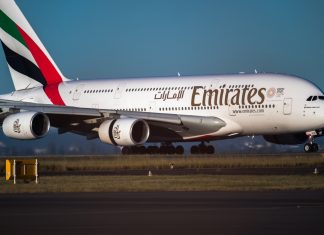A new survey of more than 6,000 airline passengers reveals the very strong demand for in-flight broadband services that exists among Europe’s aviation passengers. This demand is seen across all age groups and those travelling for either business or leisure.
The 2015 In-Flight Connectivity Survey was conducted by Inmarsat the leading provider of global mobile satellite communications services, and market research company GfK.
The survey also found that in-flight connectivity is likely to be a strong source of revenue for airlines, as well as a differentiator for carriers looking to stand out from the competition.
Highlights:
- 80% of those surveyed would use in-flight Wi-Fi if given the opportunity
- 67% of passenger users across all age groups would be willing to pay for the service, rising to 69% of 18-44 year olds
- More than 4 out of 5 see a future where internet connectivity is available on all aircraft
- 67% of passengers would feel more valued by an airline that offers in-flight connectivity, and 69% would choose a carrier which provides the service.
The survey was conducted during August and September 2015, with responses from more than 6,000 passengers who had taken a European flight in the past year and had carried at least one personal device (smartphone, tablet or laptop) with them onboard the aircraft.
Overwhelming demand
The survey found that 80% of passengers would use broadband onboard if given the opportunity, driven by their growing reliance on personal device usage on the ground. More than 3 out of 5 passengers reported that they need in-flight connectivity. While the survey revealed that business-related demand was high, business travellers confirmed that they connect their devices for leisure purposes as much as, or even more than, leisure travellers. This trend further underlines the extent to which staying connected has become a fundamental aspect of everyday life.
Web browsing and email usage continue to dominate in-flight demand across all age groups. 18-24 year olds were shown to be more likely to opt for games (43%) and video usage (37%); indicating a long-term trend towards more personalised in-flight entertainment delivered over Wi-Fi.

![MG_9744-1400x933[1] Seat airplane](https://www.ttoscandinavia.com/wp-content/uploads/2015/10/MG_9744-1400x9331-696x464.jpg)
























